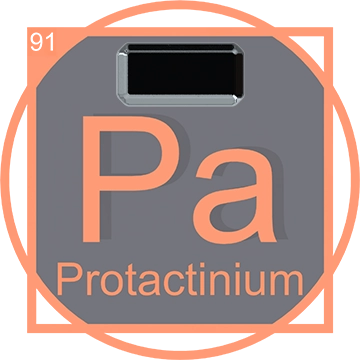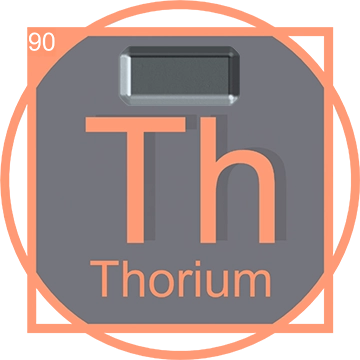Protactinium: A Rare and Radiant Element
Delve into the intriguing aspects of Protactinium (Pa), a lesser-known yet profoundly significant element in the periodic table. This enigmatic element not only captivates with its rare occurrence and lustrous sheen but also plays a pivotal role in the realms of scientific research and nuclear technology.
Discovery of Protactinium

Protactinium was first identified in 1913 by the German scientists Kasimir Fajans and Otto H. Göhring during their research on radioactive decay chains. The element was named 'protactinium' which means "parent of actinium," reflecting its position in the decay chain leading to actinium. This discovery was instrumental in the advancement of nuclear science, highlighting the element's significant radioactive properties and its potential applications in unraveling the complexities of atomic transformations. The identification of Protactinium not only filled a missing spot in the periodic table but also paved the way for deeper insights into the structure of atoms and the mechanisms of radioactive decay, thereby influencing further research in both theoretical and applied nuclear physics.
Protactinium in the Periodic Table
Protactinium is a member of the actinide series, located in Group 3 of the periodic table. It is symbolized by Pa and has the atomic number 91. This element is characterized by its high density and brightness, features that hint at its metallic nature and radioactive characteristics.
Physical and Chemical Properties of Pure Protactinium

Pure Protactinium is a silvery-metallic element that is highly radioactive and resistant to corrosion in the environment. It has a melting point of 1572 degrees Celsius and is predominantly found in the form of two isotopes, Pa-231 and Pa-234. Due to its instability and radioactivity, protactinium is handled with extreme care in laboratory settings.
Applications in Science of Protactinium

Protactinium’s unique properties make it useful in various scientific applications. Although its use is limited due to its high radioactivity and scarcity, it plays a crucial role in the study of nuclear reactions and nuclear medicine. Additionally, it has been utilized in tracing ocean currents and modeling the movement of sediments in marine environments.
Applications in Technology
In technology, protactinium has potential applications in the development of new materials for future nuclear reactors. Its ability to absorb neutrons makes it valuable in nuclear research, particularly in scenarios that simulate severe nuclear reactor accidents.
Health and Environmental Impact
Due to its radioactivity, protactinium poses health risks if not handled properly. It can cause severe biological damage, necessitating stringent safety measures during its use and disposal. Environmentally, the element must be stored in secure facilities to prevent contamination and protect ecological systems.
Production and Sources of Protactinium
Protactinium is not mined from specific mineral deposits due to its extreme rarity and radioactivity. Instead, it is typically derived as a by-product from the processing of uranium ores. During the milling of uranium, small amounts of protactinium are recovered from the decay of uranium isotopes. This extraction is complex, involving chemical reactions that isolate protactinium from other by-products.
The primary sources of uranium, and consequently protactinium, include mines in Canada, Australia, and Kazakhstan. These sites are rich in a variety of valuable elements, such as uranium, thorium, and sometimes rare earth elements which are critical in various technological applications.
Modern Uses of Protactinium
Today, protactinium is primarily used in scientific research. Its potent radioactivity makes it useful as a tracer in geological and environmental studies, helping scientists track sediment transport and understand natural processes. Furthermore, its potential for use in future nuclear technologies is being explored, particularly in the context of nuclear waste management and next-generation nuclear reactors.
Future Potential of Protactinium

The future applications of protactinium are promising, particularly in the fields of nuclear medicine and energy. Researchers are investigating its capabilities in targeted alpha therapy (TAT), a type of radiation therapy for cancer treatment. Additionally, its role in advanced nuclear reactor designs could revolutionize energy production, offering safer and more efficient methods of generating power and managing nuclear waste.












